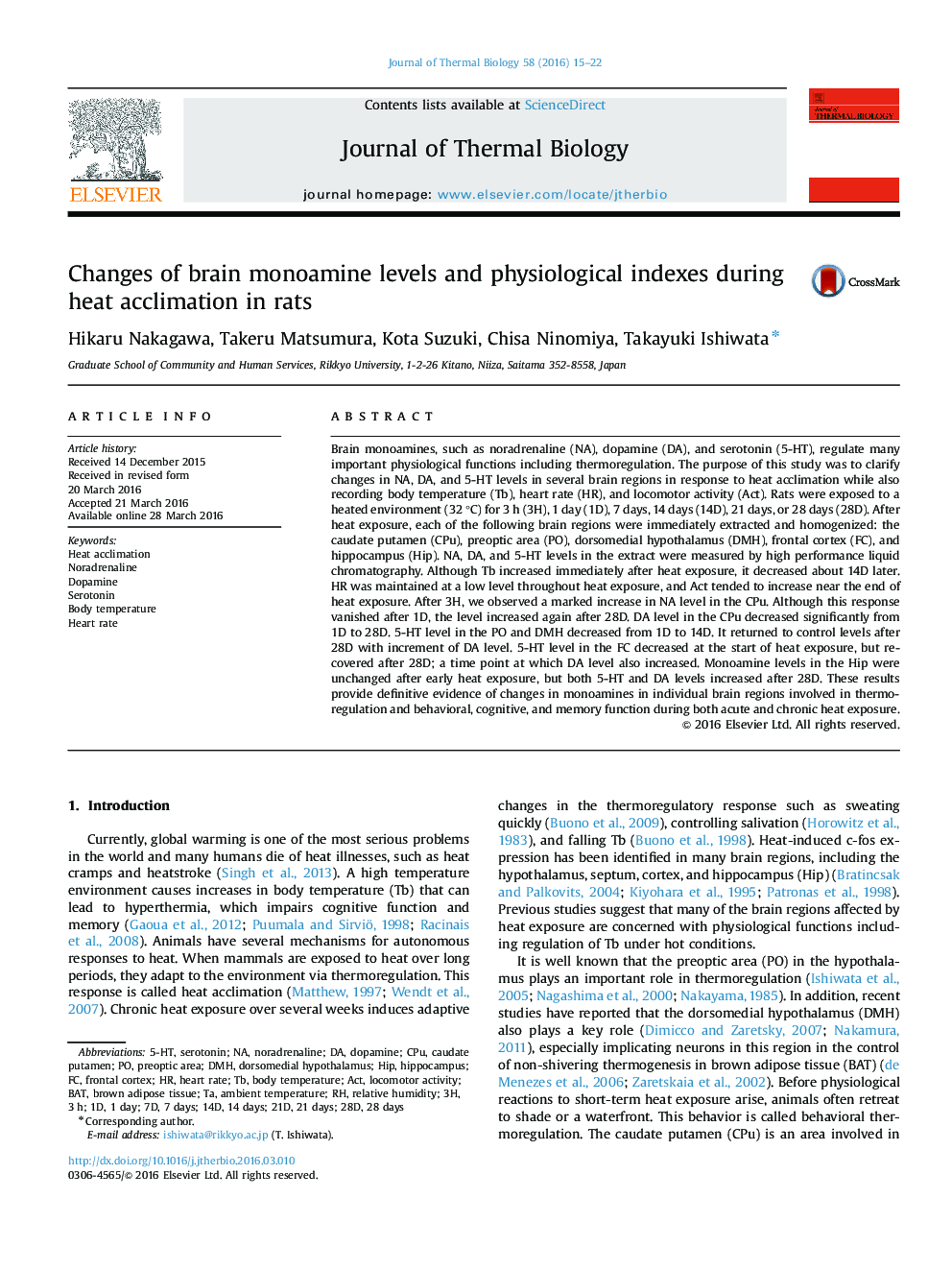| Article ID | Journal | Published Year | Pages | File Type |
|---|---|---|---|---|
| 2842655 | Journal of Thermal Biology | 2016 | 8 Pages |
•A temperature of 32 °C elicited heat defense responses in laboratory rats.•Monoamine levels change in several brain regions during heat acclimation.•Changes of monoamines in many brain regions are involved in thermoregulation.•Monoamine dynamics regulate behavior, cognition, and memory during heat exposure.•These results are relevant to the prevention and treatment of heat illness.
Brain monoamines, such as noradrenaline (NA), dopamine (DA), and serotonin (5-HT), regulate many important physiological functions including thermoregulation. The purpose of this study was to clarify changes in NA, DA, and 5-HT levels in several brain regions in response to heat acclimation while also recording body temperature (Tb), heart rate (HR), and locomotor activity (Act). Rats were exposed to a heated environment (32 °C) for 3 h (3H), 1 day (1D), 7 days, 14 days (14D), 21 days, or 28 days (28D). After heat exposure, each of the following brain regions were immediately extracted and homogenized: the caudate putamen (CPu), preoptic area (PO), dorsomedial hypothalamus (DMH), frontal cortex (FC), and hippocampus (Hip). NA, DA, and 5-HT levels in the extract were measured by high performance liquid chromatography. Although Tb increased immediately after heat exposure, it decreased about 14D later. HR was maintained at a low level throughout heat exposure, and Act tended to increase near the end of heat exposure. After 3H, we observed a marked increase in NA level in the CPu. Although this response vanished after 1D, the level increased again after 28D. DA level in the CPu decreased significantly from 1D to 28D. 5-HT level in the PO and DMH decreased from 1D to 14D. It returned to control levels after 28D with increment of DA level. 5-HT level in the FC decreased at the start of heat exposure, but recovered after 28D; a time point at which DA level also increased. Monoamine levels in the Hip were unchanged after early heat exposure, but both 5-HT and DA levels increased after 28D. These results provide definitive evidence of changes in monoamines in individual brain regions involved in thermoregulation and behavioral, cognitive, and memory function during both acute and chronic heat exposure.
